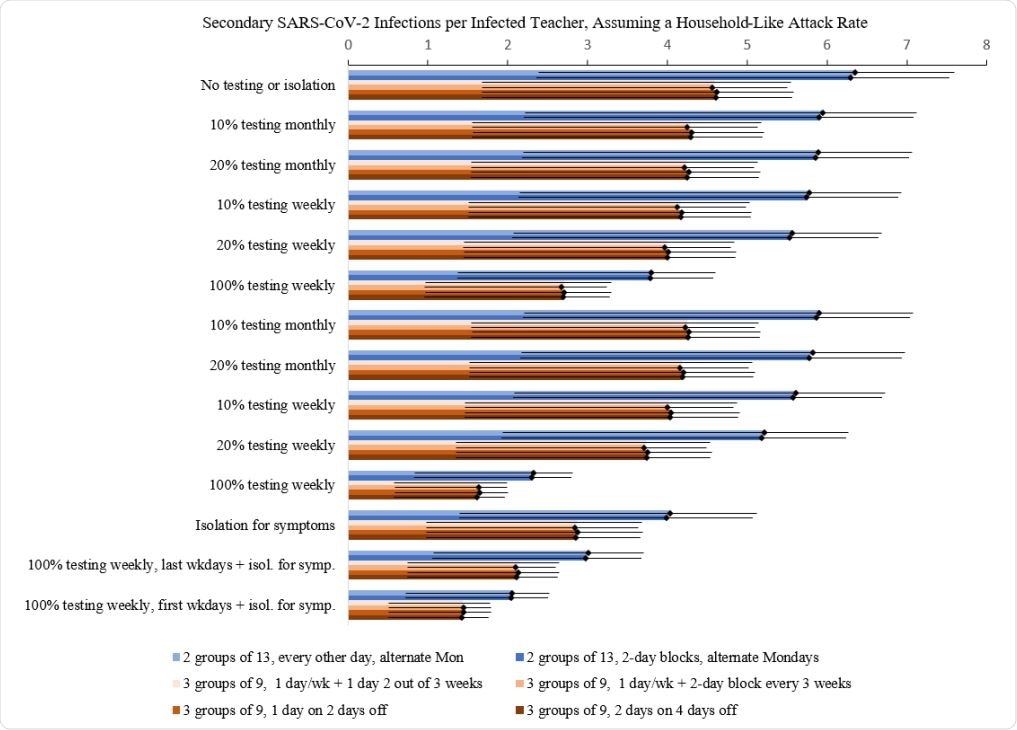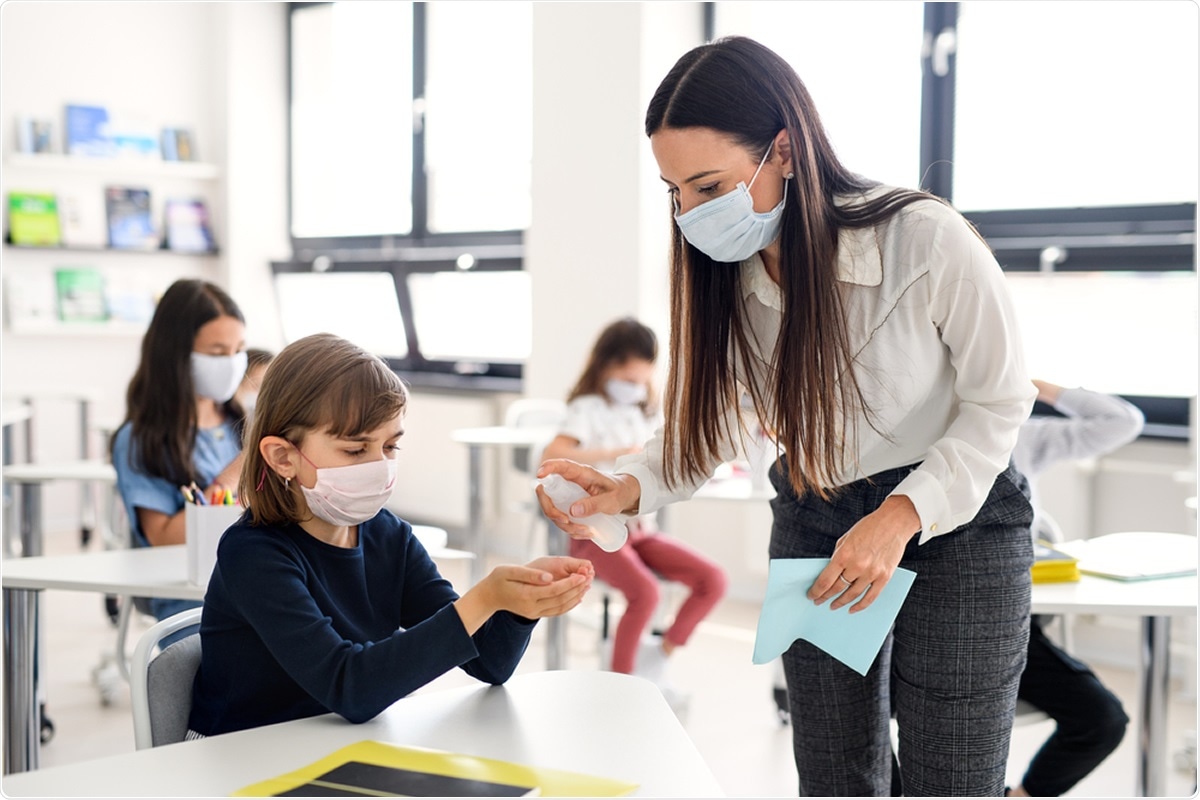The coronavirus disease (COVID-19) pandemic, caused by the severe acute respiratory syndrome coronavirus 2 (SARS-CoV-2) agent, continues to spread across the globe. Though the number of cases surges, many countries have moved on with their lives, re-opening businesses and schools.
Some schools have resumed face-to-face classes, while some opted for remote learning. Though young people are less vulnerable to the virus, they may become superspreaders.
Now, a team of researchers at the New York University Grossman School of Medicine explored which school policies had the most significant impact on reducing the risk of in-school SARS-CoV-2 transmission.
The researchers published their study on the preprint server medRxiv*. They found that infection control measures had the most significant transmission reduction, followed by small class groups with an option for remote learning, symptom screening, and random testing.
COVID-19 in schools
The U.S Centers for Disease Control and Prevention (CDC) recommends that before opening classes, schools should open as safely as possible. To enable schools to re-open, it is critical to adopt and correctly implement actions to stem the spread of SARS-CoV-2, not only in schools but also in the community.
The health agency recommends that schools should implement basic infection control protocols for a safe re-opening. These mitigation strategies include social distancing, regular hand hygiene, and regular cleaning and disinfecting frequently touched surfaces in schools and buses. Further, the CDC recommends that people wear masks in public settings and when around people who live outside of their household.
Masks are meant to protect the wearer and other people. They work as a simple barrier to help prevent respiratory droplets from traveling into the air when a person talks, sneezes, or coughs.

Study findings
To arrive at the study findings, the researchers evaluated each policy’s impact by referring to global benchmarks for the secondary attack rate of SARS-CoV-2 in schools.
Also, the researchers explored the effects of necessary policies in schools amid the coronavirus pandemic, which include infection control measures, all-remote instruction, choice of class schedule for in-person learners, daily symptom screening, testing to reduce transmission, and testing to identify school outbreaks.
Moreover, the investigators cited one report estimating the SAR in the absence of infection control. In schools in Israel, for example, 13.1 percent of attendees tested positive, among more than 1,300 attendees tested. The schools remained open for just ten days. The report also stated that the risk of transmission in the classroom is similar to within-household transmission.
Another example is in New South Wales, Australia, where the partial implementation of measures such as the wearing of masks by adults but not by young children, happened while index cases comprised of 15 adults and 12 children attended schools with more than 1,400 other people. Of these people, 633 tested positive.
However, fuller implementation of wearing masks, social distancing, proper ventilation, dividing students by cohorts, and proper hand hygiene in schools in South Korea and Germany, contributed to a reduction in virus transmission.
In South Korea, of the more than 4,700 people who attended schools with 15 index cases were tested for COVID-19. Only one person tested positive for SARS-CoV-2.
In Germany, a SARS study among school attendees evaluated antibodies against SARS-CoV-2. Only 0.6 percent of the school attendees tested positive for SARS-CoV-2 antibodies.
The study findings showed that among all the policies identified, the most effective is implementing infection control measures.
The school in Israel that re-opened without implementing infection control measures had a 625-fold higher SAR than in the South Korean school. Further, the SAR in the school in Germany was 21.8-fold higher than the SAR in Is real.
The team also noted that other than infection control measures, dividing students into small class cohorts with an option for all-remote instruction, symptom screening, and random testing 10 to 20 percent of school attendees contribute to reduced virus transmission.
Aside from students, adult staff should also be tested weekly and undergo symptom screening. A combination of symptom screening and testing on the first workday of each week could help reduce the transmission by 70 percent.
“Adherence to infection control is the highest priority for safe school re-opening. Further transmission reduction can be achieved through small rotating class cohorts with an option for remote learning, widespread testing at the beginning of the workweek, and daily symptom screening and self-isolation,” the researchers concluded in the study.
The researchers recommend schools considering re-opening of classes amid the COVID-19 pandemic, or similarly, virulent respiratory disease outbreaks should consider these relative impacts when formulating policy priorities.
*Important Notice
medRxiv publishes preliminary scientific reports that are not peer-reviewed and, therefore, should not be regarded as conclusive, guide clinical practice/health-related behavior, or treated as established information.
